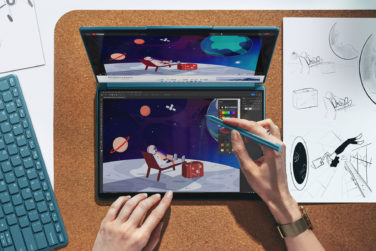One trend that was clearly evident at the 2013 Consumer Electronics Show (CES) in January—health tech is on the rise. Yes, this includes health wearables that can track various data, but it is also starting to expand beyond that to include devices such as utensils that tell you to stop eating. Here is a look at some of the health gadgets on display at CES that didn’t fall into the health wearables category.
Headband: Improving Brain Power
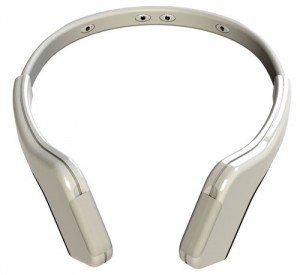 Imagine a future where you can actually control games and gadgets with your mind. Well, that future is nearly a reality with InteraXon’s Muse ($199 in late 2013), a four-sensor headband that tracks the effectiveness of your brain while allowing you to control custom games using your mind. Muse works with a series of brain trainer apps (for either your tablet or smartphone) that help to reduce anxiety and stress, focus the mind, improve motivation and productivity, and foster responsive versus reactive responses. Muse can also send your brain activity to your wireless device so you can track your progress.
Imagine a future where you can actually control games and gadgets with your mind. Well, that future is nearly a reality with InteraXon’s Muse ($199 in late 2013), a four-sensor headband that tracks the effectiveness of your brain while allowing you to control custom games using your mind. Muse works with a series of brain trainer apps (for either your tablet or smartphone) that help to reduce anxiety and stress, focus the mind, improve motivation and productivity, and foster responsive versus reactive responses. Muse can also send your brain activity to your wireless device so you can track your progress.
Scale: A Step Beyond Weight
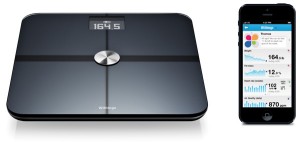 Withings’ Smart Body Analyzer ($150 in Q1 2013) can of course measure your weight, but it can also provide your body fat and heart rate as well as the air quality of your bedroom (assuming that is where you keep your scale) through temperature and carbon dioxide (CO2) readings. If you are wondering about the benefits of a scale that measures air quality, high CO2 can lead to dizziness, headaches, restlessness, difficulty breathing and increased heart rate. In other words, the purpose of this scale is to ensure you lead a fit, healthy and safe lifestyle.
Withings’ Smart Body Analyzer ($150 in Q1 2013) can of course measure your weight, but it can also provide your body fat and heart rate as well as the air quality of your bedroom (assuming that is where you keep your scale) through temperature and carbon dioxide (CO2) readings. If you are wondering about the benefits of a scale that measures air quality, high CO2 can lead to dizziness, headaches, restlessness, difficulty breathing and increased heart rate. In other words, the purpose of this scale is to ensure you lead a fit, healthy and safe lifestyle.
Glucose Monitor: Smart and Wireless
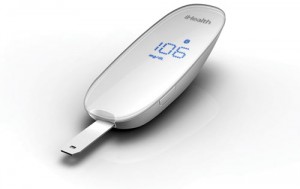 iHealth’s Wireless Smart Gluco-Monitoring System syncs with your iPhone, iPad and/or iPod Touch to provide diabetics with a convenient way to keep track of blood glucose levels. The wireless meter can store up to 500 test results and can also track trends over time and set up reminders to take medication. The device is currently pending FDA approval, but should be available in the second half of 2013.
iHealth’s Wireless Smart Gluco-Monitoring System syncs with your iPhone, iPad and/or iPod Touch to provide diabetics with a convenient way to keep track of blood glucose levels. The wireless meter can store up to 500 test results and can also track trends over time and set up reminders to take medication. The device is currently pending FDA approval, but should be available in the second half of 2013.
Utensil: Put the Fork Down
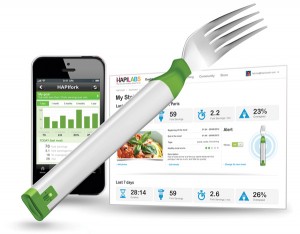 Studies show that satiety is only felt roughly 20 minutes after a meal, which means the faster you eat, the more you eat. This leads not only to weight gain, but also an increased risk of gastric reflux and digestive problems. The solution: HAPIfork ($99 in Q3 2013), which tracks “fork servings” (trips from the plate to your mouth) and vibrates—as well as flashes LEDs—to let you know when you are eating too fast. The fork also tracks overall meal duration, fork servings per minute and per meal, and the duration of each fork serving. This data can then be transferred to your computer via USB so you can track your habits and improvement.
Studies show that satiety is only felt roughly 20 minutes after a meal, which means the faster you eat, the more you eat. This leads not only to weight gain, but also an increased risk of gastric reflux and digestive problems. The solution: HAPIfork ($99 in Q3 2013), which tracks “fork servings” (trips from the plate to your mouth) and vibrates—as well as flashes LEDs—to let you know when you are eating too fast. The fork also tracks overall meal duration, fork servings per minute and per meal, and the duration of each fork serving. This data can then be transferred to your computer via USB so you can track your habits and improvement.
Diagnostics: A Real-life Tricoder
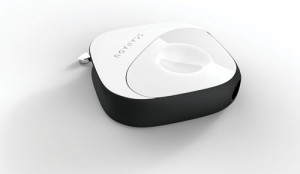 In Star Trek, “Bones” McCoy could just pull out his handy medical tricoder and pretty much learn everything he needed to know about a patient. While Scanadu’s Scout ($150 in late 2013) can’t tell you everything, it certainly reveals a lot. Just hold it up to your temple and in less than ten seconds it can accurately read pulse transit time, heart rate, electrical heart activity, temperature, heart rate variability and blood oxygenation, and then send the data to your smartphone. The device is currently undergoing FDA approval.
In Star Trek, “Bones” McCoy could just pull out his handy medical tricoder and pretty much learn everything he needed to know about a patient. While Scanadu’s Scout ($150 in late 2013) can’t tell you everything, it certainly reveals a lot. Just hold it up to your temple and in less than ten seconds it can accurately read pulse transit time, heart rate, electrical heart activity, temperature, heart rate variability and blood oxygenation, and then send the data to your smartphone. The device is currently undergoing FDA approval.



